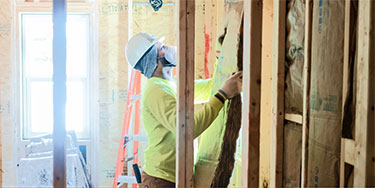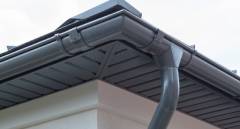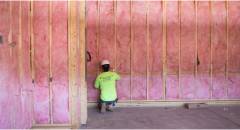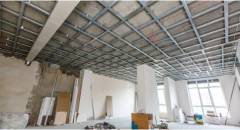What to Expect When We Insulate Your Attic
If you’re planning to have your attic insulated soon, you probably want to know what that process is going to be like — especially the day of, when our contractors are traipsing through your home and making noise doing who knows what. To help alleviate your concerns and equip you with the knowledge you need to make informed decisions, let’s talk about the process from beginning to end — starting with the decisions you’ll need to make and discuss with our team in advance.
What Decisions You’ll Need to Make
We can boil down all the different considerations for your home to a few key points.
- What R-value do I want?
- What type of insulation do I want?
- Should I keep old insulation?
Let’s start with the first one. R-value refers to the resistance of a material to heat passing through it, and it’s the common way to measure insulation, both for an individual material and after you’ve stacked up different materials. You want a total of at least R-49 for an attic, according to ENERGY STAR recommendations for Zone 5, where we’re located. We can help you figure out the details on this one. Remember, if you keep your old insulation, its R-value still counts toward the total (assuming it covers everything it ought to).
Second is the question of type. You have three major options here: fiberglass batts, the panels you probably have in your walls; cellulose loose-fill, the loose piles of insulation that are blown in by machine and may already be in your attic; and spray foam, a wet spray that adheres and then dries into thicker panels, often installed along the ceiling and walls of your attic instead of set into the floor. Which one you want depends on budget, what you already have in place and how you plan to use your attic in the future. The architecture of your attic may also influence your decision.
Finally, to keep the old or replace it. Usually you can keep it, though it may not be doing much for you if it’s old or compromised. You might need to pull it if it has significant problems or if you won’t have the space for it in combination with your new insulation.
What the Installers Need to Know
Before the installers show up, they need to have a good idea of what sort of insulation they’re installing, what R-value you’re aiming for, how you intend to use the attic in the future, any special pitfalls or concerns you might be aware of and whether they’re removing your old insulation.
Be sure to ask plenty of questions in advance, because the more you know, the more likely you are to think of something important to let the team know before they get started.
The Day Of
Different types of foam insulation have different processes. Batts are the least intrusive to install, being simple panels attached to your floor or walls in most cases. Blown-in cellulose and spray foam will both involve big, often quite noisy machines pumping insulation into your attic, and you’ll probably want or need to be out of the house for a variety of reasons — especially areas near the attic, as they’ll be covered in plastic to ensure easy cleanup when the team is done.
Spray foam will require you to stay out for a day for safety reasons, while the others won’t require so much time overall but may still have our team in your home for quite a while.
After We’re Done
When the team is done, you should immediately notice the difference in problems like draftiness or excessively running heating units. If you’re experiencing ice dams or other symptoms of a poorly insulated attic, those should disappear too if all’s in place. And your next few energy bills should show you exactly what sort of gains you’ve made in terms of energy efficiency.
Closing Thoughts
It can be stressful and a bit scary to get any kind of work done on your home — but now you know everything you need to know, and we hope it doesn’t seem so intimidating. If you still have questions or need help making decisions, let us know — our team will be glad to help you explore your options and understand what to expect in further detail.
You can reach Town Building Systems at 716-525-8910 or by messaging us on our contact page.







